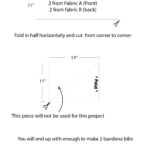How Do I Know If My Dog Broke His Leg
Is your dog limping or yelping in pain? It’s possible that they have broken a leg, which can be a serious and painful injury. As a responsible pet owner, you should know how to recognize the signs of a broken leg and what to do next. In this article, we’ll provide you with some tips and advice on how to know if your dog broke his leg.
Signs of a Broken Leg in Dogs
Dogs can break their legs in various ways, such as jumping off furniture, getting hit by a car, or falling down stairs. The severity of the fracture depends on the location and extent of the damage. Some common signs that your dog may have a broken leg include:
– Limping or favoring one leg: If your dog is not putting weight on one leg or holding it up, it could indicate that there is pain or weakness in that limb.
– Swelling or bruising: A broken bone can cause inflammation and discoloration around the injured area. You may notice a lump or bump on your dog’s leg that wasn’t there before.
– Pain or sensitivity: Your dog may cry out, whimper, or growl when you touch the affected leg. They may also lick or bite at the area to try to relieve the discomfort.
– Deformity or instability: In some cases, you may be able to see that your dog’s leg looks bent, twisted, or misaligned. Your dog may also have trouble standing up or walking normally due to the injury.
If you observe any of these signs in your dog, it’s important to take them seriously and seek veterinary attention promptly. Delaying treatment could lead to complications such as infection, nerve damage, or even amputation.
What to Do if Your Dog Broke His Leg
When you suspect that your dog has a broken leg, your first step should be to call your veterinarian and describe the symptoms. Depending on the severity of the injury, they may advise you to bring your dog in for an examination or provide some initial guidance over the phone.
In general, here are some things you can do to help your dog if they broke their leg:
– Keep them calm and still: Try to minimize your dog’s movements as much as possible to prevent further damage or pain. You may need to crate or confine them to a small area to restrict their activity.
– Apply first aid if necessary: If there is bleeding or an open wound, you can use a clean cloth or bandage to apply pressure and control the bleeding. Do not attempt to set the bone yourself unless you have training and experience in doing so.
– Transport them safely: If you need to take your dog to the vet, make sure you do so in a secure and comfortable manner. You can use a blanket or towel as a makeshift stretcher if your dog is too large or heavy to carry.
– Follow your vet’s advice: Once you arrive at the clinic, your vet will assess your dog’s condition and recommend a course of treatment. This may involve X-rays, pain medication, splinting, casting, surgery, or other interventions depending on the nature of the fracture.
Preventing Broken Legs in Dogs
While accidents can happen no matter how careful you are, there are some steps you can take to reduce the risk of your dog breaking their legs:
– Supervise your dog when they are playing or exercising: Make sure that your dog has a safe and secure environment to run around in, and don’t let them engage in high-risk activities such as jumping off high surfaces.
– Provide proper nutrition and exercise: Keeping your dog at a healthy weight can reduce strain on their bones and joints. Regular exercise can also help strengthen their muscles and improve their balance.
– Use appropriate gear: If your dog is prone to injury or has a history of leg problems, you may want to consider using protective boots or braces. These can provide extra support and cushioning for their legs.
Conclusion
Knowing how to recognize the signs of a broken leg in dogs is an important skill for any pet owner. By being vigilant and proactive, you can help your dog get the care they need if they experience this painful and disruptive injury. Remember to stay calm, follow your vet’s advice, and take steps to prevent future accidents from happening. And don’t forget to give your furry friend plenty of love and attention as they recover!



